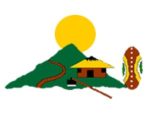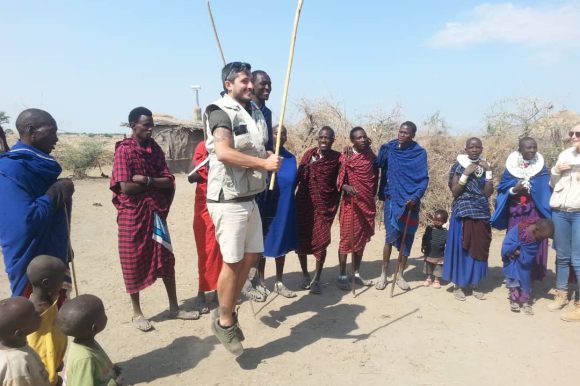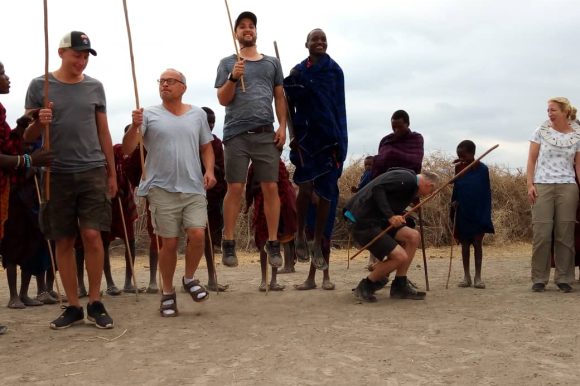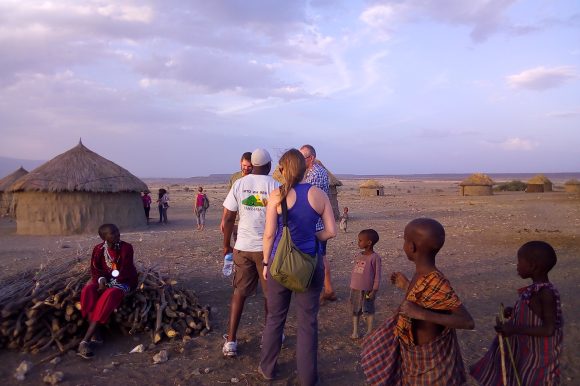Tour Highlights
You will visit a real Maasai boma and see the lifestyle of this legendary tribe up-close. Along with the guided tour of the boma and an introduction to the local Maasai population. Tribesmen will offer to paint traditional tattoos for visitors and even let them milk their prized cows
Tour Itinerary
The Maasai community can be found in East Africa (parts of Kenya and Tanzanian plains) and are traditionally nomads. The men are herders and believe that cows are theirs by right. Cows come first, then women and children respectively. More cows equals more wives and implies a status for a man, thus they are polygamous. Their cultural values and beliefs have remained unchanged since the 15th century .However, with education gaining ground some are slowly abandoning their values and the next century will find them still trying to upgrade to modernity. They are open, gracious, happy and welcoming people who the governments of Kenya and Tanzania have allowed the privilege to cross borders freely without legal documents
The Maasai Boma is a group of huts (manyattas). They are quick to put up and cheap to maintain. They are temporary mainly because of the Maasai’s nomadic lifestyle. They are made by women using sticks, cow dung mud and grass. Upon entering a Boma, you will be greeted by children who spend their days playing around while their mothers – the women – gather firewood from the fields and fetch water for the family. Within no time the entire family will surround you and welcome you with chanting singing and dancing. They will dress you in shukas making you one of their own. You will be taught the ways of the people as well as have conversation with them. You will have the opportunity to know how they interact and how they obtain medicine from local herbs. Every married woman owns a hut and lives there with her children. The beds are made of sticks and the traditional ‘mattresses’ are skins and hides. The rooms are round in shape, pitch dark inside and dimly lit. The door is not the conventional one you have been used to – they are particularly narrow and generally around four feet high.
The Boma is surrounded by a fence of thickets, thorns and thistle which provides the community with protection from wild animals. Most of the wild animals like the zebras and giraffes have adapted to live harmoniously with both the people and their animals. Acacia trees are a common feature around the Boma and provide shade on a sunny day. During the day the Maasai Boma is deserted. The women will have gone to the fields to fetch water or collect firewood. The men will herd their cattle all day – only to return ‘home’ in the evening. The women respect men at all costs. If a man finds a spear in front of a hut, it means that another man is getting intimate with his wife – if the man inside is married then you are not supposed to go in, but you can go and enjoy yourself elsewhere so long as the owner is not there! That is acceptable here and very common. Duties such as rearing kids, giving birth, cooking, milking cows and building houses are for women. They also build and maintain the huts. Detailed beading is done by the women as a way of showing their creativity as well as to providing an economic income. They produce different patterns which reflects different age groups within the community. Different age groups wear different patterns.
Colour is important and symbolises different things to this community. Green symbolises pasture, peace and vegetation as well. Blue equals the sky, God (Enkai in the Maasai language) who they take as the provider for water and pasture for their animals. Red will be used to represent blood from animals slaughtered during special Maasai ceremonies- initiation of young men and women and others. Black basically will represent the people and the animals that live in their environment. White will mean purity and sometimes will symbolise milk. Yellow and orange represents hospitality, however yellow goes a mile further to stand in for sunshine, and a certain fruit commonly used by this particular people in making body tattoos.
A popular delicacy which has to be sampled is blood mixed with milk. Meat is in plenty and is prepared in a way as to last for months without refrigeration maintaining both its taste and freshness. It is cooked, then dried for preservation.




Leave a Review